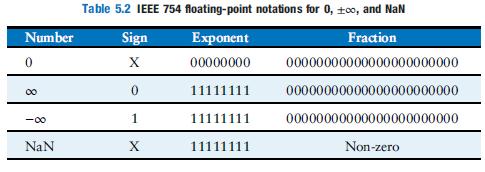In this problem, you will explore the design of a 32-bit floating-point multiplier. The multiplier has two
Question:
In this problem, you will explore the design of a 32-bit floating-point multiplier. The multiplier has two 32-bit floating-point inputs and produces a 32-bit floating-point output. You may consider positive numbers only and use round toward zero (truncate). You may also ignore the special cases given in Table 5.2.

(a) Write the steps necessary to perform 32-bit floating-point multiplication.
(b) Sketch the schematic of a 32-bit floating-point multiplier.
(c) Design a 32-bit floating-point multiplier in an HDL. Simulate and test your multiplier to prove to a skeptic that it functions correctly.
Fantastic news! We've Found the answer you've been seeking!
Step by Step Answer:
Related Book For 

Digital Design and Computer Architecture
ISBN: 978-0123944245
2nd edition
Authors: David Harris, Sarah Harris
Question Posted:





